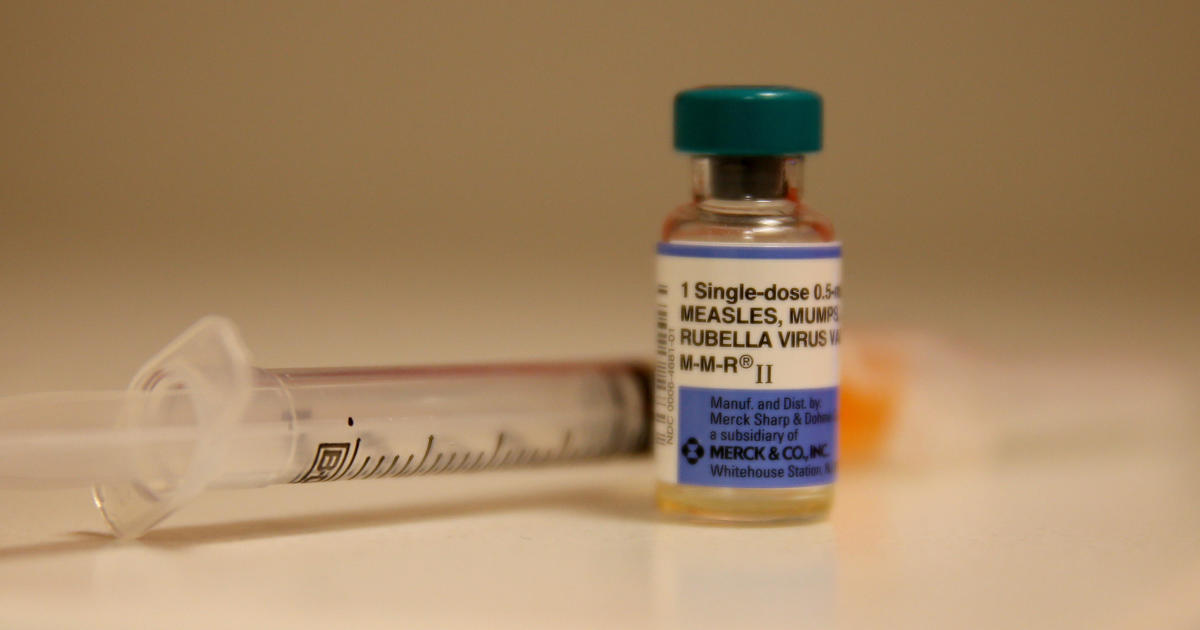[ad_1]
At least 41 cases of measles have been reported in the U.S. across 16 states so far this year, according to new weekly figures published Friday by the Centers for Disease Control and Prevention.
This is up from 35 cases in 15 states reported to the CDC, as of Feb. 22. Michigan is the new state now included in CDC’s tally.
The figures mark one of the steepest increases in recent history of the virus at this time of the year. It comes as experts worry the country could face a repeat of 2019’s massive surge, which authorities at the time said could threaten the U.S. status of having eliminated the virus.
“That is not a good slope of the curve, in terms of where we’re going with measles,” Dr. Demetre Daskalakis, head of the CDC’s National Center for Immunization and Respiratory Diseases, said Feb. 29 to a panel of the agency’s advisers.
Daskalakis said measles was preventable with safe and effective vaccines, warning that communities with low vaccination coverage were at the greatest risk.
Federal officials have voiced growing concern in recent weeks over the climb in measles cases, which come as vaccination coverage has declined in many parts of the country.
A CDC spokesperson confirmed Feb. 28 that it was working to support investigators in Florida, which has reported the most infections this year. The CDC is offering genotype sequencing from its laboratory, which in the past has helped trace links between cases.
“We are a global community. As measles continues to increase in other parts of the world, these importations continue to happen. And when they land places where coverage is low, we are at risk for ongoing larger outbreaks,” he said.
Which states have reported measles cases in 2024?
Local and state health authorities have publicly discussed the details of at least 39 confirmed or suspected cases of measles across 16 states: Arizona, California, Florida, Georgia, Indiana, Louisiana, Maryland, Michigan, Minnesota, Missouri, New Jersey, New York City, Ohio, Pennsylvania, Virginia and Washington.
Pennsylvania was among the first states to report cases this year, with three infections reported from an outbreak that began there in 2023. On Feb. 27, authorities in Philadelphia announced the outbreak was officially over.
New Jersey also later confirmed a case of measles in a resident of a county bordering Philadelphia, though officials said they were unable to find a direct link to that outbreak or another route of exposure.
Missouri’s Clay County reported a measles case in a resident on Jan. 12 who the department said had traveled through Kansas City International Airport.
Virginia and Maryland each reported a case of measles in residents who had recently traveled through Dulles International Airport – one of the three major airports serving the Washington, D.C. region – following travel.
Georgia also reported a case of a resident on Jan. 18. A spokesperson for the state’s health department said the case had returned from a trip in the Middle East. A second case was later confirmed in an unvaccinated family member.
New York City has also reported two cases of measles in residents so far this year. Authorities in the city believe both were cases following international travel, and have not been directly connected to each other.
California has tallied two measles cases this year. One was in Los Angeles County, following a flight from Istanbul. The other was reported a day later in San Diego, also after international travel.
Ohio has confirmed at least four cases so far. The first was announced in the Dayton area by authorities in Montgomery County on Feb. 3, from a child who had recently traveled. Two more infections were later confirmed in nearby Miami County. A fourth case was later confirmed in Richland County near Cincinnati, which has not been linked to the other cases. A fifth potential case is being investigated, officials said on Feb. 20 in Clermont County.
Minnesota announced a case linked to international travel on Feb. 7 in Dakota County, near Minneapolis. Two more infections — in a sibling and a cousin of the original case — were later also confirmed in the state.
Arizona’s Maricopa County confirmed a measles case on Feb. 10 after international travel. Two more infections that authorities linked to the original case have since been reported by the same county, which spans Phoenix.
Florida has reported the most cases of any state so far this year, after at least seven elementary school students were infected at an elementary school in Broward County. Two more cases were reported in the same county, near Miami. The state’s records tally all nine of the cases in the county as having been infected in Florida. Another travel-related case was also announced on Feb. 23 in a resident of Polk County, between Orlando and Tampa.
Louisiana said on Feb. 21 that two residents in the greater New Orleans area were diagnosed with measles, after returning from a trip outside of the state.
Washington’s Spokane County also announced a case on Feb. 21. The county said their case was initially exposed to the virus out of the country.
Indiana reported a case on Feb. 24 in Lake County, near Chicago. Citing privacy concerns, the department has refused to release additional information.
Michigan’s health department announced a case on Feb. 23 in Oakland County, north of Detroit, which they said was “associated with international travel.”
What is driving the increase in measles cases in 2024?
Measles cases globally have been rising, with an increase in what the World Health Organization deems large or disruptive outbreaks in countries across the Eastern Mediterranean, Europe and Asia. The CDC has said this increased the share of unvaccinated travelers exposed to the virus and bringing it back to the U.S.
“We’re a little bit concerned we’re now in the same or similar position to what we see epidemiologically in the run up to that 2019 year, where suddenly we had this explosion of cases. And that’s what’s troubling us,” Natasha Crowcroft, the WHO’s senior technical adviser for measles and rubella, said Feb. 22 at a meeting of federal vaccine advisers.
Crowcroft warned efforts to catch up on measles vaccination rates have fallen behind other shots, she said, leaving more than half of countries at “high risk” of outbreaks this year.
“We’ve lost 7% in our coverage in low income countries. We’re already way behind in low income countries, but they’ve fallen even further,” said Crowcroft.
New outbreaks of measles have emerged in European countries that appeared to be ranking well in their overall rates of measles vaccinations, officials said, but harbored communities with dangerously large immunity gaps among younger children. That is different than in 2018 and 2019, when those countries saw many unvaccinated older children and adults infected too.
“What we’re currently experiencing really is the results of accumulation of susceptible children who were not reached by immunization programs that were impacted by the COVID pandemic,” said José Hagan of the WHO’s European arm.
Among health departments in the U.S., officials say greater awareness of the need for measles vaccinations before traveling abroad is also needed.
“People traveling to let’s say Africa or Southeast Asia may go to travel clinics and make sure they’re up to date on their immunizations, but travelers going to the European region, from the United States, don’t necessarily think that way,” said Christine Hahn, medical director for the Idaho Division of Public Health.
In 2023, Idaho faced its largest measles outbreak in decades after an unvaccinated resident was infected while traveling in Europe. Officials in Philadelphia say their large outbreak could also have been avoided by an immunization before travel.
“Our initial case, while too young to get routine vaccinations, would have been old enough to get an early vaccine for travel, and could have prevented our whole cluster had they done that,” said Shara Epstein of the Philadelphia Department of Public Health.
[ad_2]
Source link



